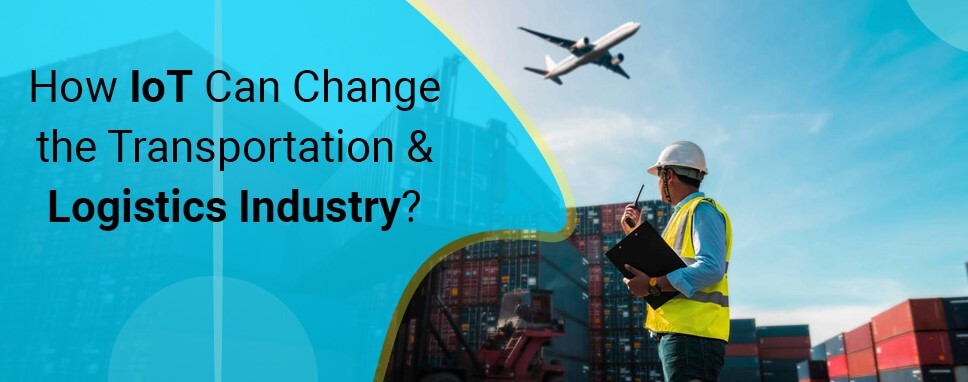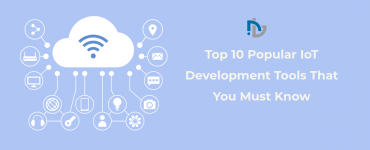Today in this blog we are going to learn about how the two foremost technology trends such as Augmented Reality and IoT would impact the Transportation and logistics industry and help in transforming the business-standard.
To talk about the Internet of Things (IoT), it tremendously accelerates productivity, profitability, and operations with solutions that are designed for the transportation & logistics industry. If you place IoT solutions at the right time, then they can easily connect with all the devices across a centralized cloud network.
Augmented reality is a technology that introduces digital components such as computer-generated graphics, video or sound effects, sensory projects into the real world. Augmented reality enabled applications designs and displays virtual information that overlays the real object, which provides great consumer experience. Augmented reality is not only making its impact in custom transportation and logistics software development companies but also in the Transportation and logistics industries as well.
Rise of Augmented Reality in Transportation & Logistics Development Industries
Augmented reality in Transportation and logistics is about to revamp the infrastructure through easing the overall process. Logistics is a vast and complex industry that includes key operation model i.e. Transportation, Warehouse operations, delivery, and after-sales service. Augmented reality is bringing a revolution, from a highly inventive warehousing management system to secure transporting to effective supply chain management, all these areas become easy to optimize.
According to a report, it is predicted that augmented reality will be a $90 billion revenue market by 2020.
- Augmented Reality and Warehouse operations
Warehouses are multipurpose operational hubs for businesses where items or products can be stored, assembled, and packed for further delivery. The operations specifically include sorting of items and retrieving the particular item. But a huge warehouse can be difficult to locate a particular item. With Augmented reality, warehouses can be easily remodelled digitally to understand the pattern to accommodate products and how this will affect other components in the process. The main advantage is that you are not required to physically arrange the entire environment and provide decision-makers with a first-hand view of how measures need to be calculated for the realignment. AR comes handy by providing a 3D image of the warehouse and can display the product that the individual has been looking for. Eventually, it can minimize time consumption and takes away the possibility of error.
- Efficient and accurate transportation services
Transportation enhancements have played a vital role in the development of the Logistics Industry. Products from the warehouse have to be shipped to various hubs for the final delivery of the product. The delivery of the items to the many hubs is executed and verified manually. This can be a cumbersome job. Moreover, it can lead to confusion and is vulnerable to mishaps.
- AR makes great customer experience and delivery person stress-free service
Augmented reality enabled powered parcel service mobile apps to allow consumers to track their shipment in real-time, right from the warehouse to their doorstep. This AR-enabled app also shares items related to information like its weight, price, quantity, and size. This gives an improved experience to the consumers, leading to increased positive response. With the help of AR, delivery personnel can select the next item to deliver using 3D imaging. Another advantage of AR is the security it provides. It can scan the individual who accepts the delivery to make sure that the appropriate person receives the product ordered.
- With AR after-sales service becomes efficient
As many logistic companies provide after-sales service. Hence, it needed a vast array of labourers which could increase the expenditure for the organization. AR in logistics offers an optimal solution to fix this issue as well. AR can provide a 3D imaging of the items and can map the defect easily. This can then be serviced by the customer using the internet or database that contains the procedure to repair the defective item. Thus, minimizing the repairing costs and time for both the customers and the organization that provides the repair.
How IoT Can Change the Transportation & Logistics Industry?

IoT can capture and share critical process data to gain real-time visibility of transportation and logistics ongoing and forecasted operations. The following are some of the aspects that would help us to learn how IoT can change the operational standards of the transportation and Logistics industry.
- Automate the services
To expand the horizons on certain technology trends such as big data, IoT, and mobility services, several companies are involved in transportation and logistics and focus on automating the services with cloud-based applications and process management. The IoT provides completely streamlined and highly integrated transportation and warehouse management solutions through the help of sensors and other network-based devices.
Read more : Cost To Develop A Logistics And Transportation App Development?
So we can say that IoT is making a great impact on not only just the Software development industry but also on the Transportation & Logistics Industry as well.
Organizations use IoT devices to improve the transportation process both in the warehouse and beyond. According to Statista, the installed base of IoT connected devices by the year 2025 would sum up to 75.44 billion globally. And the worldwide companies will spend about $40 billion on connected products to increase the productivity of deliveries.
- Improved Security
IoT devices help companies to improve security and theft detection and help track all items and alert the business manager in case something goes missing. Let’s take an example of IoT-powered security applications that are connected with CCTVs, these apps allow warehouse managers to block the doors of the facility remotely, and asset tracking logistics application help monitors deliveries and many more.
- Transparency in supply chain
IoT helping logistics and transportation companies in end-to-end product tracking that increase the transparency of the delivery process. Business managers track the product all the way from the warehouse to the customer’s doorstep that helps increase the manager’s confidence in all stages of the supply chain and is completed smoothly.
- Time-saving
IoT boosts the client’s trust in the brand and saves a ton of time as customers no longer bother customer support with the delivery states update request. IoT also providing business managers to know the number of items in the warehouse, environment conditions during deliveries, and employee efficiency. In logistics, IoT improves real-time delivery, inventory monitoring, and quality of planning and budget allocation.
- Fine Maintenance
An IoT device allows you to check the health and condition of the vehicle and conduct predictive and proactive maintenance. With the help of IoT sensors, transportation authority can get a better idea about vehicle movements. By using IoT devices, organizations can optimize resources such as personnel, machine, and equipment.
- Human Error reduction
IoT decreases the significance of human error that causes accidents, crashes, theft, counterfeiting, and substitution of products during delivery. IoT improves the safety of delivery and creates a new job market.
Conclusion:
IoT provides better transportation control and able to monitor the cargo condition and cargo the parameters depending on the current situation. IoT helps locations management such as track and retrieve information about each vehicle that transports goods. IoT allows organizations to track their inventory and facilitate inventory in large areas. IoT can control the origin of the material and the quality of its products and track the shipment from the warehouse to the end-user.
On the other hand, AR will reshape the future of logistics in many more ways than one explains in this article. Opening up new possibilities within existing channels, Augmented reality helps organizations to transform their logistic operations into high performing units by minimizing costs and enhancing efficiency at the same time.









